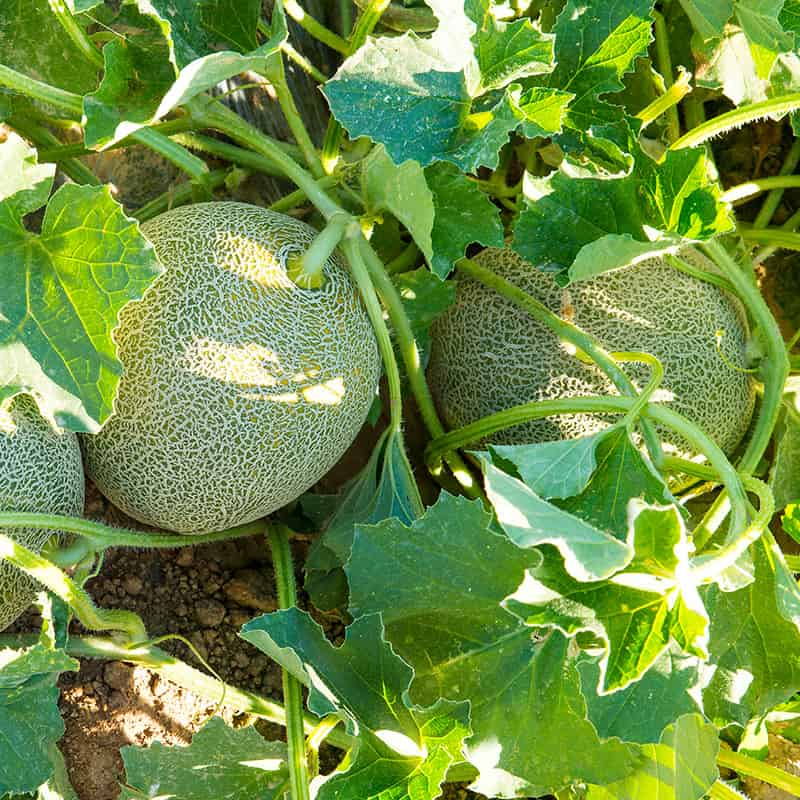

Melon is a summer crop native to Africa. There are several varieties of melon that differ in size, colour and flavour. The development of new varieties has made it possible to obtain melons with better organoleptic characteristics.
Its shape is different depending on the variety (spherical, elliptical, oval, etc.) and the skin can be green, white or yellow. It is important that the placenta that houses the seeds be small so that it does not detract from the flesh of the fruit.
Melon grows in semi-arid climates with sunny days, warm nights and dry air. In humid regions with little sunshine, the ripening and quality of the fruit is altered.
They adapt to various soils, although the ideal soils are well drained and not too acidic (pH=6). Melons are sensitive to a lack of micro- and macro-elements in the soil. Soils with high salinity negatively affect production.
Planting density depends on the variety and size of fruit to be marketed. Planting with a row spacing of between 1.5 and 2 m is most common.
The water demands of the melon depend on the environment, with the crop coefficient being close to 0.8. Irrigation during the last days of cultivation is not recommended as this stress has been found to cause a higher concentration of sugars in most melon varieties.
The best system for melons is drip irrigation, with one irrigation line per row. Dripper spacing will depend on soil texture, with 20-30 cm being the most common. Drip lines are usually installed below the plastic.
